Elk Calling Tactics
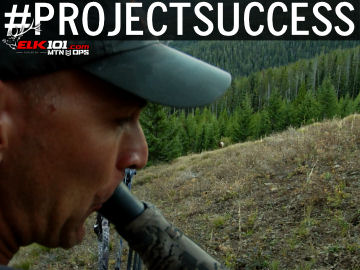
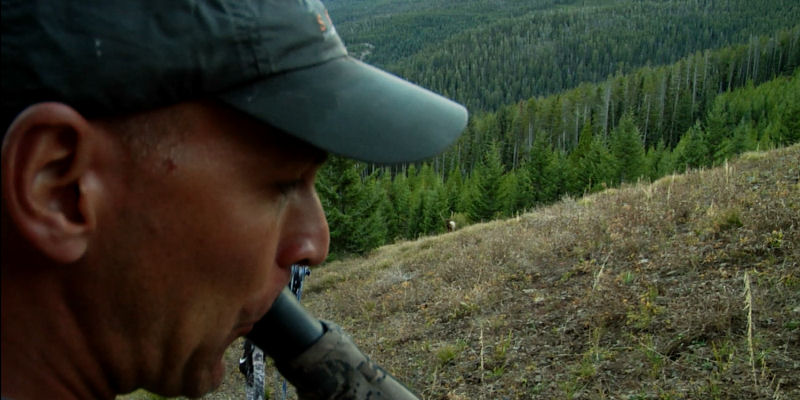
You guys are awesome. Seriously, thank you. The response to these emails has been completely overwhelming, to the point where my server couldn’t keep up again on Monday. I apologize for any inconvenience that might have caused you, but I think we have it beefed back up and ready for this email… 🙂
I have been bombarded with emails over the past week asking for more details about the new elk hunting project. I wish I could just launch it and turn you loose with it right now, but we are testing and tweaking the final stages to make sure there are no hiccups once it’s live. I did send it out for beta testing last week to a handful of elk hunters…check out what Randy Newberg had to say about it:
“I’ve been hunting elk for 25 years and I still have so much to learn. What Corey has provided here filled in many missing pieces. All elk hunters, from beginner to experienced, now have a HUGE headstart down the path of elk hunting knowledge. I only wish this had been available years ago. Thanks for the great information!” – Randy Newberg
The full project will be launching one week from today (next Wednesday, June 1st). But, I am going to give you a really detailed sneak peak of the project tomorrow! Watch for tomorrow’s email, which will include details and a link to preview the new project!
But for now, let’s discuss calling elk. There were several responses to Monday’s article and the question of “What specifically do you want to learn when it comes to calling elk?” Here are the top 3 responses:
- What are the elk saying and how should I respond?
- When should I be aggressive and when should I be timid/when to use cow calls or bugles?
- What early season calling tactics work?
Here are my thoughts on elk calling…
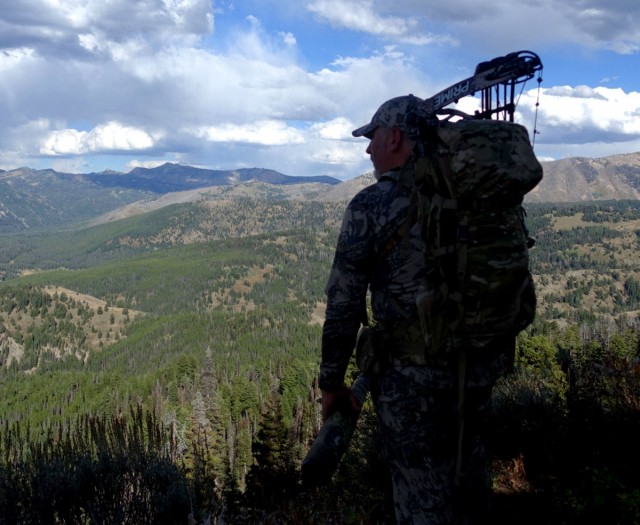 Calling elk is probably the one area where the greatest gap between confidence and insecurity exists. There are so many variables and factors in calling elk that it can become overwhelming. Many hunters are completely confused and don’t even know where to start. How do I learn to use calls? What sounds do I need to practice? When do I use each sound? Do I bugle too much? Should I use a cow call instead of a bugle? What did the bull just say to me, and should I respond aggressively or timidly? Why is the bull bugling aggressively, but running away? Why did that bull just sneak in on me? Why is he hanging up at 100 yards? What call should I use to break him loose? And on and on and on goes the questions and the doubts.
Calling elk is probably the one area where the greatest gap between confidence and insecurity exists. There are so many variables and factors in calling elk that it can become overwhelming. Many hunters are completely confused and don’t even know where to start. How do I learn to use calls? What sounds do I need to practice? When do I use each sound? Do I bugle too much? Should I use a cow call instead of a bugle? What did the bull just say to me, and should I respond aggressively or timidly? Why is the bull bugling aggressively, but running away? Why did that bull just sneak in on me? Why is he hanging up at 100 yards? What call should I use to break him loose? And on and on and on goes the questions and the doubts.
The confusion that often comes from this one topic can be enough to cloud not only our understanding, but also our hope of being successful. Fortunately, it doesn’t have to be confusing or complicated. And there is no need to worry that your calling abilities or understanding are going to keep you from being successful. That is the whole point to these emails and the upcoming project release…to give you the tools you need to be confident, and successful.
Many of you probably know that I am an engineer. You probably also know that it took me a long time to learn to be successful as an elk hunter. Coincidently, once I applied my engineering thinking to elk hunting, my success rates increased exponentially. And, that thinking also made my approach to calling elk much more simple.
Engineering has taught me to break processes down to the basic mechanics, and then simplify the process (eliminate unnecessary steps) to the point where it is producing the most efficient yields. Believe me, I once stood in that vast wilderness of elk calling doubt, and have felt the overwhelming despair of not knowing what to do, and being absolutely frustrated that the elk wouldn’t do what I wanted them to do. I knew my calling sounded realistic enough, but something was missing in my efforts. So, how did I overcome it? I simplified my approach.
The most-asked question in response to this topic was “How do I understand what the elk are saying, and how do I learn how to respond?” However, I think the second question probably holds more value for this discussion, and is just an extension of the first question. It was, “When should I be aggressive or timid, and how do I know whether I should respond with a bugle or a cow call?”
As I go through this topic, remember that I once had the same questions you have in regards to calling elk. Through many years of trial and error, and simplifying my strategy, here is what I have concluded. There are two trains of thought when it comes to calling elk. First, you can try to analyze every single sound the elk makes and attempt to define it and assign a language to it in order to make the best response. This approach involves allowing the elk to control the conversation and all of our actions become a “best-guess” reaction to what the elk says or does. You can only imagine the plethora of combinations of elk sounds and actions you would need to learn, memorize, and act upon.
Or, you could completely ignore what the elk is saying and learn to control the situation with your communication, regardless of what the elk says. This is definitely the more simple approach, but would it really work? Honestly, yes. In fact, I’ve found that the more I simplify my calling strategy, the more confident I become in my calling abilities and the more success I enjoy.
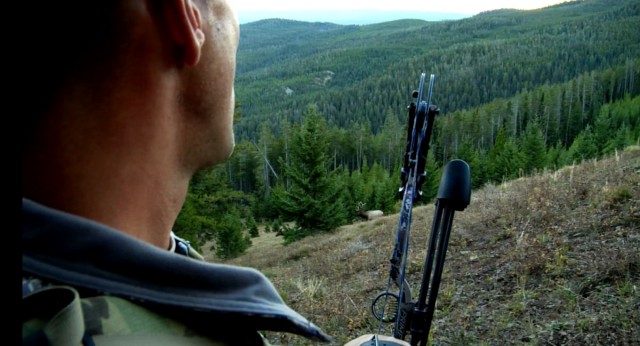 So, now as we go back and look at that question, the real question becomes, “What do I want to say to the elk to control the situation?” And that’s completely up to you. If you are always responding to the elk, they are controlling the conversation, and if an elk is in control, you will have a hard time gaining an advantage over him. So just ask yourself this question: What is the reaction you want to elicit from the elk? Do you want him to come slipping in out of curiosity, or do you want him ripping large trees out of the ground as he comes storming in to annihilate the challenger? Either one is fine, and both can lead to a successful hunt. You just need to determine how you are most comfortable calling and hunting, and then go and do it.
So, now as we go back and look at that question, the real question becomes, “What do I want to say to the elk to control the situation?” And that’s completely up to you. If you are always responding to the elk, they are controlling the conversation, and if an elk is in control, you will have a hard time gaining an advantage over him. So just ask yourself this question: What is the reaction you want to elicit from the elk? Do you want him to come slipping in out of curiosity, or do you want him ripping large trees out of the ground as he comes storming in to annihilate the challenger? Either one is fine, and both can lead to a successful hunt. You just need to determine how you are most comfortable calling and hunting, and then go and do it.
It really boils down to this: bull elk respond to two primary vocal triggers – the desire to breed (cow calls) or the desire to fight (bugles). Outside of those two factors, there really isn’t any other reason a bull elk will be likely to come in to your calling. So, you need to funnel your communication into one of those emotional triggers.
Someone recommended that I create a flow diagram for the process I go through as I determine how to approach each calling situation. I actually have one already created, and it is very simple. In fact, I am able to approach every single calling setup the exact same way, and it doesn’t matter if it’s the pre-rut or the peak rut. My goal is the same regardless of the day – I want to call in a bull elk. And to do that, I have to trigger an emotional response from him. Since there are only two emotional triggers I can use, my choices are simple – cow call to make him think there is a cow there to be bred, or bugle to make him think there is a bull there for him to fight.
But this is where the real psychology of elk calling comes in….it’s not necessarily what you say (the cow call or the bugle) that will elicit the response from him – it’s how you say it. If you want a bull to get excited about a lonely cow that is ready to be bred, you need to play the part. Communicate that loneliness and desperation to the bull. That doesn’t mean you have to go all “hyper-hot” and cause thumb cramps from rapid-action on the Hoochie Mama. But you do need to trigger his emotions. Every time he bugles, talk right back to him with cow calls. Tell him you are interested in him, and invite him to come hang out with you. Put emotion into your cow calls…don’t just use a basic, mechanical cow call to make an elk sound. Use your emotion to communicate what you want the elk to hear.
On the other hand, if you want to deliver a message that will get the bull fighting mad, what do you need to say? Or rather, how do you need to say it? With emotion, right? If you use your Marty McFly voice and timidly say, “Gee Biff, one of these days I’m going to get angry and you’ll be sorry”, the bull is going to laugh at you and walk off. You’re not serious, and you’re not a worthy challenger. If you scream venom and fire at the bull, however, and insult him to the point that every other elk in the valley is laughing at him, he’s going to be more apt to come looking for a fight. Maybe I’m just a natural-born pesterer, but using emotion in my calling to start a fight with a bull elk has been insanely effective.
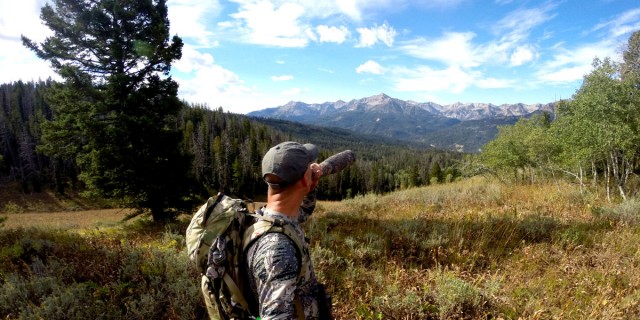
To summarize this concept, don’t worry about what the elk is saying. If you have any chance of calling him in, you are going to have to control the conversation and trigger one of two emotional responses in the elk – either his desire to breed or his desire to fight. Yes, it is possible to call in a timid, call-shy bull with a blind calling setup where you sit for 45 minutes and go through a full-range of herd communications to make the bull think there is a herd of elk there. But that same bull has a bottled-up emotion response ready to be triggered. Plus, when he comes in to your calls because of an emotional response, he becomes a much easier target. His guard is down and emotions – not logic – are controlling his actions. With logic, he is coming in warily and using his senses to protect him. With emotion, he is thinking only about breeding or fighting.
Additionally, those emotions are building within a bull elk from the middle of August all the way through the middle of October when they are finally done breeding and retreat back to their post-rut haunts to recover and prepare for winter. So, the simplicity of this calling strategy answers all of the top 3 questions: What is the elk saying, How should I respond, and How can I use calls during the pre-rut?
Now, there are quite a few additional variables that are definitely worth discussing….call-shy elk, bull-to-cow ratios, hunting pressure, choosing your setup, supplements to your calling, etc. All of these variables can add to or affect your calling. If you are able to simplify your actual calling approach though, you can then fine-tune your tactics and develop a calling strategy that you are confident in, and that works most effectively most of the time. And ultimately, that is what we need to be consistently successful, which is the point of all of this discussion, as well as the new project.
I am going to be covering all of these variables, and a whole lot more in the project when it launches next Wednesday. Again, be sure to mark your calendar and join me here on Elk101.com for the launch party! To help kick off the release of the project, I’m going to be giving you an opportunity for two MAJOR GIVEAWAYS. The first will be an all-expense paid trip to Boise, Idaho! I know, lame right? But, I am looking forward to hanging out with the winner here in Boise and spending a day or two talking about any and every elk hunting topic you want to talk about. We can work on calling, tactics, scouting, shooting….whatever you want. The second giveaway will be my full elk hunting gear setup – everything I take with me into the elk woods in September. It will include my bow, arrows, sight, backpack, clothing, calls, optics, boots, and much, much more – over $5000 worth of elk hunting gear!
If you would, take a minute and let me know which Giveaway Package you would rather win – the trip to Boise or the gear. Just leave your comments in the comment area below. I’ll pick one random winner from those comments and send them a pair of Vortex 8×42 binoculars! 🙂
Oh, and by the way, the 10 winners of the University of Elk Hunting DVD’s are:
Ryan Sarkkinen
Timothy
Steven Hedden
SJH
Adam Sammons
Archery Shooter
Nate Hanan
Lance Cantrell
Bryan Langford
Dan Duncan
If your name is listed here, just shoot me an email at [email protected] and let me know your address, and I’ll get the DVD shipped right out.
And don’t forget, I’m going to give you a pretty detailed sneak peak of the project tomorrow….watch for that email, and thanks again for all the positive comments and interaction!
